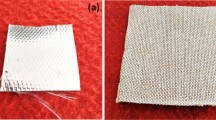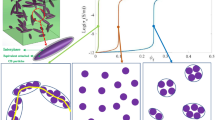Abstract
Dispersion state of carbon black(CB) was studied in polymer blends which are incompatible with each other. It was found that CB distributes unevenly in each component of the polymer blend. There are two types of distribution. (1) One is almost predominantly distributed in one phase of the blend matrix, and in this phase fillers are relatively homogeneously distributed in the same manner as a single polymer composite. (2) In the second, the filler distribution concentrates at interface of two polymers. As long as the viscosities of two polymers are comparable, interfacial energy is the main factor determining uneven distribution of fillers in polymer blend matrices. This heterogeneous dispersion of conductive fillers has much effect on the electrical conductivity of CB filled polymer blends. The electrical conductivity of CB filled polymer blends is determined by two factors. One is concentration of CB in the filler rich phase and the other is phase continuity of this phase. These double percolations affect conductivity of conductive particle filled polymer blends.
Similar content being viewed by others
References
J.Garland (1966) Trans.Met.Soc.AIME 236: 642
F.Buche (1972) J.Appl.Phys. 43: 4837
F.Buche (1973) J.Appl.Phys. 44: 532
W.F.Verhelst, K.G.Wolthuis, A.Voet, P.Ehrburger and J.B.Donnet (1977) Rubber Chem.Tech. 50: 735
A.K.Sircar and T.G.Lamond (1978) Rubber Chem.Tech. 51: 126
S.M.Aharoni (1972) J.Appl.Phys. 43: 2463
R.P.Kusy and D.T.Turner (1973) J.Appl.Polym.Sci. 17: 1631
K.Miyasaka, K.Watanabe, E.Jojima, H.Aida, M.Sumita and K.Ishikawa (1982) J.Mater.Sci. 17: 1682
M.Sumita, H.Abe, H.Kayaki and K.Miyasaka (1986) J.Macromol.Sci.-Phys. B 25: 171
M.Sumita, E.Jojima, H.Aida, K.Miyasaka and K.Ishikawa (1983) Kobunshi Ronbunshu 40: 203
G.E.Pike and C.H.Seager (1974) Phys.Rev.B 10: 1421
C.H.Seager and G.E.Pike (1974) Phys.Rev.B 10: 1435
M.H.Walters, S.N.Keyte (1962) Trans.Inst.I.R.I. 38: 40
S.Wu (1982) Polymer Interface and Adhesion, Marcel Dekker Inc. New York
Y.Hayakawa (1988) Thesis of Tokyo Institute of Technology, to be published to other journal
M.Sumita (1989) Nippon G upomu kyokaishi, 62, 7: 438
Author information
Authors and Affiliations
Rights and permissions
About this article
Cite this article
Sumita, M., Sakata, K., Asai, S. et al. Dispersion of fillers and the electrical conductivity of polymer blends filled with carbon black. Polymer Bulletin 25, 265–271 (1991). https://doi.org/10.1007/BF00310802
Accepted:
Issue Date:
DOI: https://doi.org/10.1007/BF00310802




